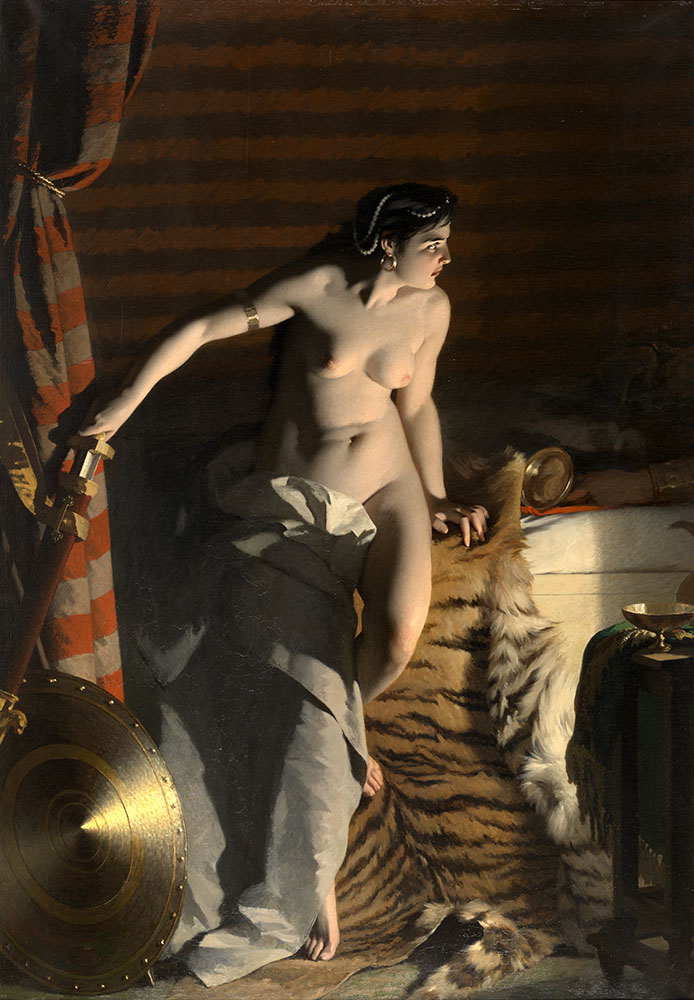MacDougall Auctions 2-3 December 2009
2 December 2009

* 267. BELLOLI, ANDREI 1822-1881
Judith signed, c. 1872
Oil on canvas, 196.5 by 139 cm.
100,000-120,000 pounds
Provenance: Collection of an Italian noble family.
Authenticity has been confirmed by Vladimir Petrov.
Andrei Belloli arrived in St Petersburg at the end of the 1850s. A graduate of the Academy of St Luke, he rapidly gained popularity in the northern capital’s aristocratic circles thanks to the paintings and plafonds which he produced for the tsar’s box in the Mariinsky Theatre and for the Church of the Resurrection at Yekaterinskiy Palace in Tsarskoye Selo. The artist soon afterwards found himself snowed under with high society commissions, and portrait painting now constitutes the bulk of his artistic legacy.
For many years, Belloli took an active part in the artistic life of the Northern Russian capital, and in 1861, as a permanent participant of academic exhibitions, he was awarded “in honour of art and achievements in the arts” the title of Academician of portraiture. In 1869 he even organised a one-man show in the Academy the proceeds of which went to poor students and the widows and orphans of artists. His artistic mastery and active civic position earned him official recognition from the Russian authorities: in 1870, in connection with his 50th anniversary, he was awarded the Class II Order of St Stanislav for his many years of artistic activity for the benefit of Russian art.
Painted at the peak of his fame, Judith features Belloli’s favourite model of the 1870s – a dark haired, sensuous southern beauty who is very familiar from his monumental historical canvases. This painting, executed in 1872, essentially develops the same successfully realised composition of Woman Bathing, his other famous work, only in a historical, “costume” setting. We find Judith in Olofern’s luxurious tent at a moment of heroic resoluteness. Her arm is extended towards a sword, and her gaze, feverish with alarm, is directed towards her enemy who is sleeping on a chest, but the nature of the draping and the “winsome” turn of the figure undoubtedly have their origins in the decorative image of Woman Bathing. In employing these methods, Belloli has also succeeded in his historical canvas in displaying his virtuosic mastery of portrayal of a nude model, and the foremost critic of the 19th century, the formidable V. Stasov, wrote about this, describing the “inimitable portraits portraying pomaded cherubs and perfumed maidens and ladies, which create an effect simply by means of a bare elbow or neck”.
Notes on symbols:
* Indicates 5% Import Duty Charge applies.
Ω Indicates 20% Import Duty Charge applies.
§ Indicates Artist's Resale Right applies.
† Indicates Standard VAT scheme applies, and the rate of 20% VAT will be charged on both hammer price and premium.